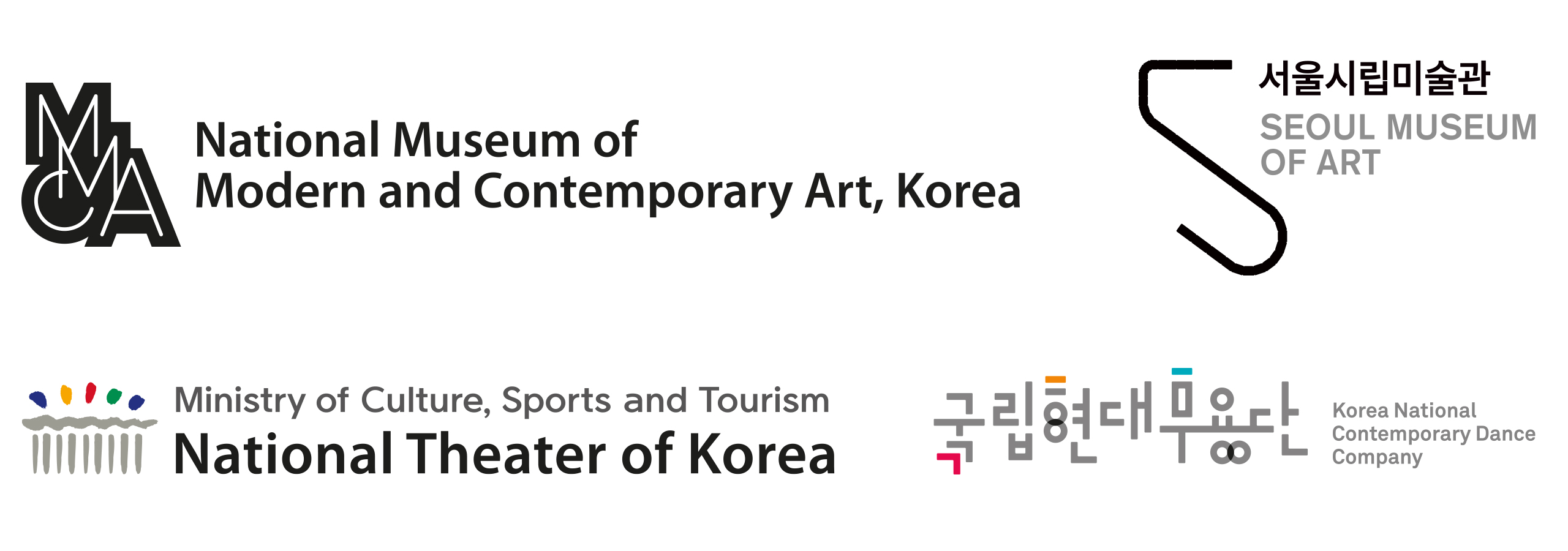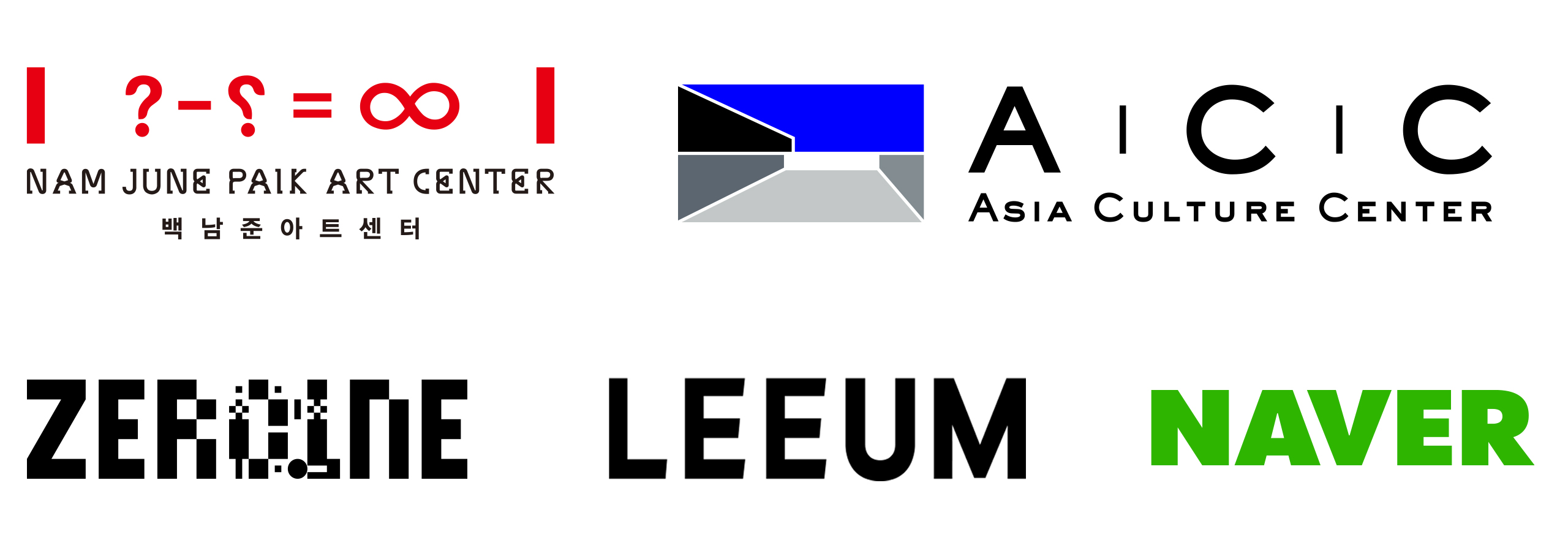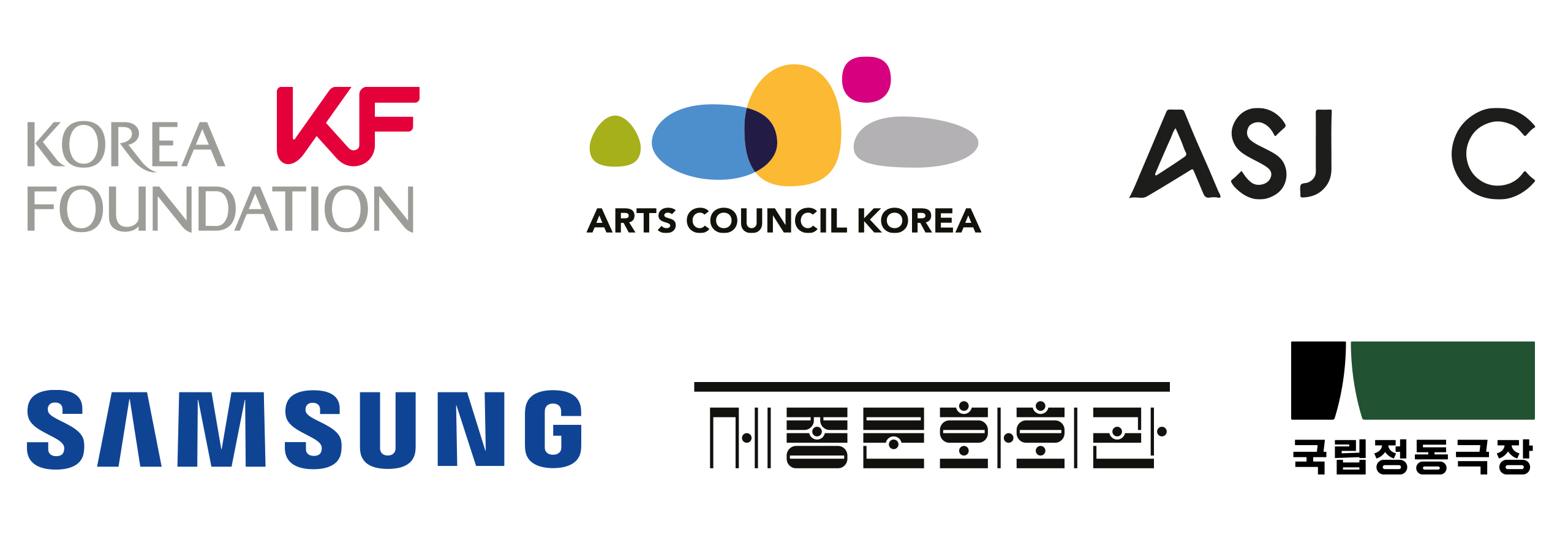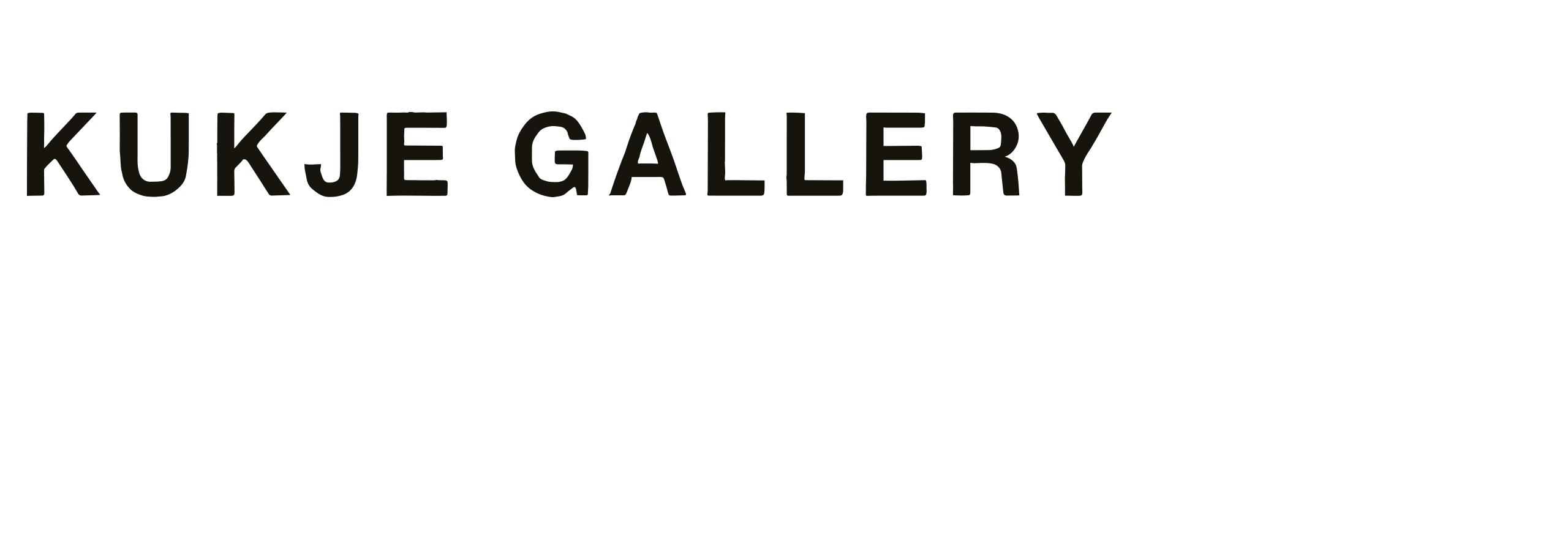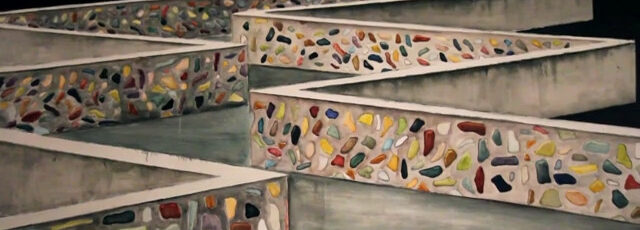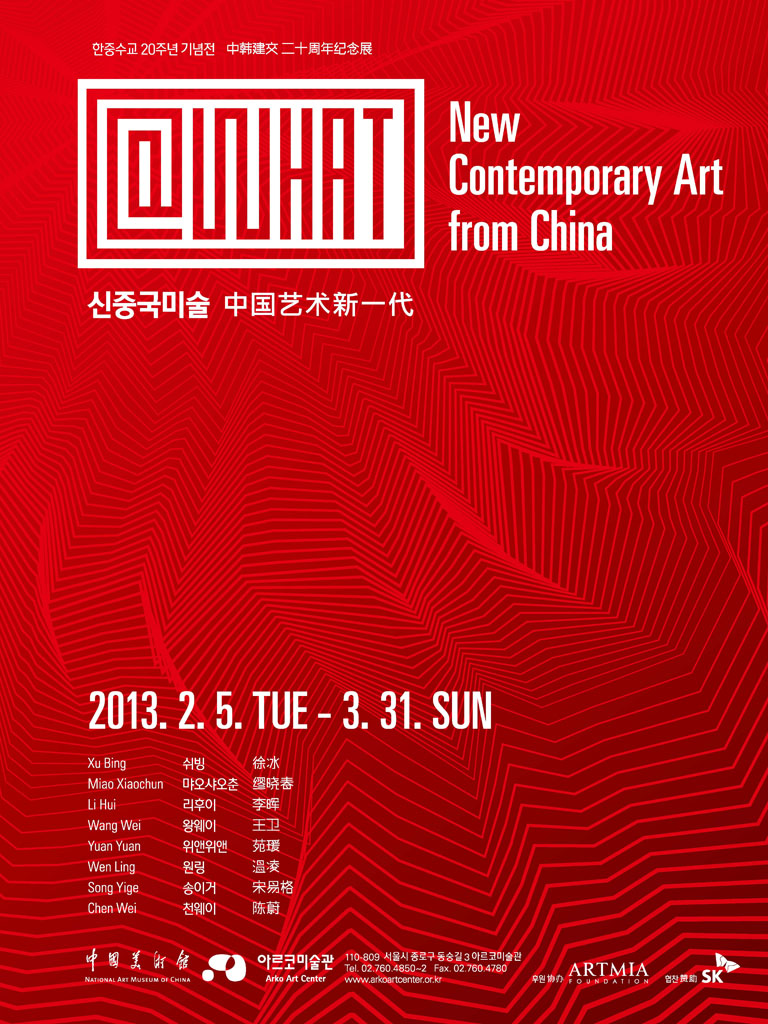@What – 중국미술의 오늘을 보여주다
오늘날 중국현대미술계에는 ‘85미술운동시기에 활동을 시작하여 중견작가로 오늘날까지 활발한 활동을 지속해온 쉬빙(徐氷)과 같은 작가들로부터 이른바 ‘바링허우(八零後)’로 불리우는 80년대 출생까지 다양한 층위의 작가들이 존재한다. 대부분의 작가들은 광대한 사회변화와 연동된 치열한 전위정신의 흐름이 서구와 관방에 의한 국제화와 성공의 과정을 경험했거나 목도했고 큰 영향을 받았다.
<@What: 신중국미술>전은 다양한 작가 구성을 통해 다층적으로 구성된 오늘날 중국현대미술의 흐름을 살펴본다. 이 전시는 ‘차이나 아방가르드’의 1세대로 분류되는 50년대 출생작가 쉬빙의 서예작품과 아방가르드 중심의 현대미술 흐름과는 거리를 두고 장르의 다양화를 추구한 60년대 출생작가인 먀오샤오춘의 영상작품으로 시작한다. 이어 70년대에 출생한 작가로 선배 작가들의 치열한 전위정신과 국제적인 성공에 영향을 받으며 자신들만의 조형언어를 모색했던 리후이와 왕웨이의 작품으로 이어진다.
또한 전시는 리후이 등의 작가와 출생 시기는 비슷하나 추구하는 미학이나 활동의 영역이 상이한 원링의 작품으로 연결된다. 원링의 작품은 70년대 출생세대와 80년대 출생 세대간의 정서적 간극을 간접적으로 드러내고 있다. 이어서 80년 이후 출생하여 오늘날 중국 신세대의 감수성을 반영하고 있는 위앤위앤, 송이거, 천웨이의 작품으로 이어진다. 이들의 작품은 동시대 사회에 대한 이질감과 미래에 대한 불안감 등의 복잡한 감정을 표출하고 있다.
@What – Presenting the Landscape of Contemporary Chinese Art
Today’s Chinese contemporary art scene encompasses a wide spectrum of generations—from mid-career artists like Xu Bing, who emerged during the ’85 Art Movement, to younger artists born in the 1980s, often referred to as the balinghou generation. Most of these artists have either participated in or witnessed the intense avant-garde spirit that developed alongside rapid societal changes in China, and many have experienced or been influenced by the process of globalization and institutional validation from the West.
The exhibition <@What: New Chinese Art> explores the multilayered landscape of today’s Chinese contemporary art through a diverse roster of artists. It opens with calligraphic works by Xu Bing, a first-generation figure of the so-called “China Avant-Garde,” born in the 1950s, and video works by Miao Xiaochun, a 1960s-born artist who distanced himself from avant-garde centralism to pursue a broader range of media.
The show continues with works by artists born in the 1970s, such as Li Hui and Wang Wei, who were shaped by the pioneering spirit and international success of their predecessors while forging their own formal languages. The exhibition then shifts to Yuan Ling, who, though of a similar generation, presents a markedly different aesthetic and conceptual approach. His work subtly reveals an emotional divide between the 1970s and 1980s generations.
The final section features artists born after 1980—Yuan Yuan, Song Yige, and Chen Wei—whose works embody the sensibilities of a new generation in China. Their practices express the complex emotional terrain of contemporary life, including a sense of disconnection from society and anxiety about the future.


